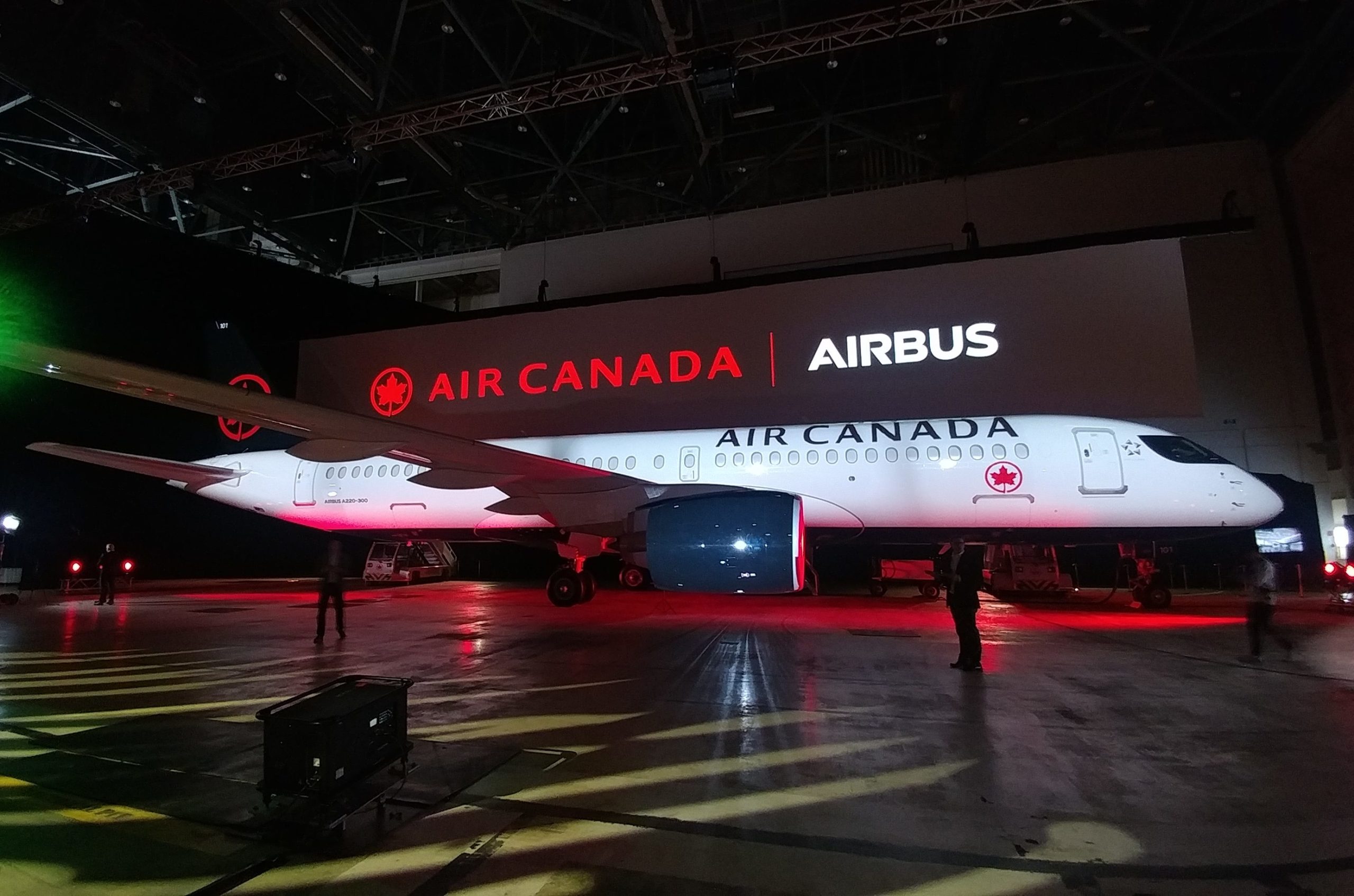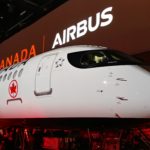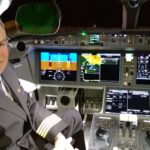[PHOTOS] Air Canada Unveils First Airbus A220
Share

The next phase of Air Canada’s fleet modernization has officially begun now that the carrier’s new Airbus A220 has been delivered. The airline is the first operator in North America to fly the larger variant of the aircraft, which enters revenue service today, flying between Montreal and Calgary.
Air Canada’s first Airbus A220 was unveiled at the airline’s Montreal headquarters yesterday with executives from Airbus and Bombardier looking on. Air Canada placed an order for 45 Bombardier C Series aircraft in 2016, with options for an additional 30, before Airbus acquired the C Series program in 2018, rebranding the program as A220.
A first look at the IFE aboard the new @AirCanada @Airbus #A220.
Economy seats are equipped with a 12-inch @PanasonicAero screen featuring content in 15 languages. The aircraft is also equipped with satellite-based @Gogo 2Ku high-speed Wi-Fi. #PaxEx #AvGeek pic.twitter.com/0yPc57Fxr1— APEX (@theAPEXassoc) January 15, 2020
With the introduction of the aircraft, Air Canada becomes the first airline in North America to operate the Airbus A220-300 (Delta became the first A220 operator in North America when its A220-100 entered service in February of last year). Air Canada CEO Calin Rovinescu underscored this fact by saying the company “is very proud to have paved the way for orders from other major carriers.” Airbus Canada CEO Philippe Balducchi said his company looks forward to continuing its partnership with Air Canada “for years to come.”
“Although it’s a mid-range, smaller aircraft, the A220-300 has the feel of a wide-body international aircraft,” said Craig Landry, Air Canada’s executive vice-president of Operations. “For example, there are much larger overhead bins. Every customer onboard the aircraft would be able to bring a rollaboard suitcase and fit it in the overhead bin.”
The high-capacity overhead bins offer up to 15% more space compared to the standard Airbus A320 bins. Other amenities include full-color LED ambient lighting, 19-inch-wide economy seats and panoramic windows that are 26% larger than those on a Boeing 787.
Passengers can enjoy over 1,000 hours of entertainment in 15 different languages delivered via seatback screen. “We still believe in the importance and the value of seatback in-flight entertainment,” Landry said.
The A220 has a range of over 3,100 miles, allowing it to fly anywhere in North America. Coupled with its capacity and trip cost, the aircraft “opens up the opportunity for a lot of new point-to-point destinations,” according to Landry. Permanent routes, to be launched in May, will include Montreal-Seattle and Toronto-San Jose.
Calin Rovinescu, @AirCanada president and chief executive officer, discussed the superior level of comfort the @Airbus #A220 brings considering it is a single-aisle aircraft. The plane represents the next phase of the company's fleet renewal. #PaxEx #AvGeek #FlyTheFlag pic.twitter.com/imoOldvHBY
— APEX (@theAPEXassoc) January 15, 2020
The heart of the A220, its next-generation Pratt & Whitney geared turbofan engines, offer 20% lower fuel burn per seat, a 20% reduction in carbon dioxide emissions and are 50% quieter than previous-generation aircraft. Pilot Patrick Tompkins praised the “clean-sheet design” of the plane as well as the fly-by-wire protections built into the flight control system. Furthermore, the plane’s favorable wing loading (the measurement that relates the mass of an aircraft to the total wing area) means that passengers should experience a smoother ride in turbulence.
Pride filled the hangar as leaders from Air Canada, Airbus and Bombardier thanked the members of their respective teams for their years of dedication to a project whose future was once in doubt. Landry added, “this aircraft is not only great for Air Canada. It’s good for Canada and Quebec because it’s a made-in-Canada solution.”







